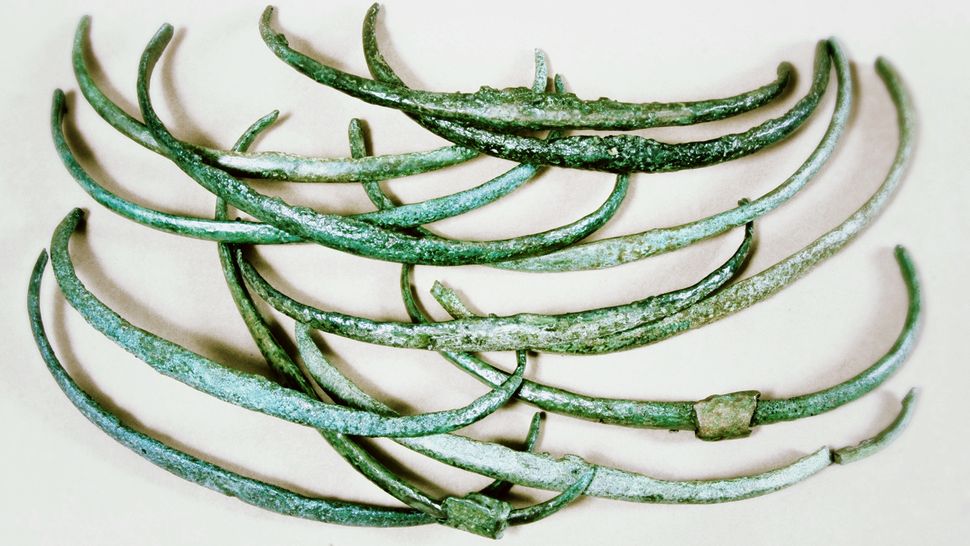Earliest form of money found and it's a bunch of rings and axes
By Mindy Weisberger - Senior Writer 11 hours ago
Objects from the early Bronze Age in Europe may represent the oldest form of currency.

Spangenbarren, or ribs, represented wealth in prehistoric economies.
(Image: © M.H.G. Kuijpers)
Got change for an axe? Thousands of years ago, people used bronze objects such as neck rings, axe blades and "ribs" (curved, flattened rods) as a type of prehistoric currency, making them the oldest known form of money in the world.
Archaeologists recently analyzed more than 5,000 of these ancient metal artifacts dating to the early Bronze Age (2150 B.C. to 1700 B.C.), from approximately 100 stashes around Central Europe.
They found hoards of similar objects — ribs, rings or blades — that were about the same size and weight. This relative uniformity, along with the fact that the objects were discovered in bundles or caches, rather than individually, suggesting that these items represented recognized standards of value and were used as an early form of money as far north as Scandinavia, researchers reported in a new study.
To be considered money — the kind that predates coins — an ancient object must have been produced in large numbers; used for exchanges; and "standardized in some way, such as in terms of appearance or weight, said lead study author Maikal Kuijpers, an assistant professor of archaeology at Leiden University in the Netherlands.
More:
https://www.livescience.com/earliest-money-bronze-age.html?utm_source=notification
